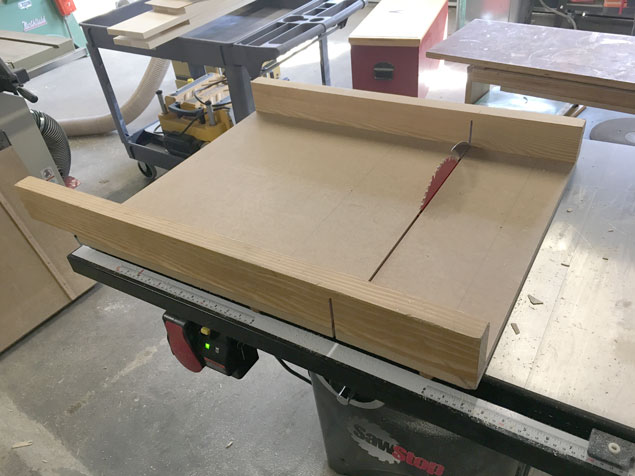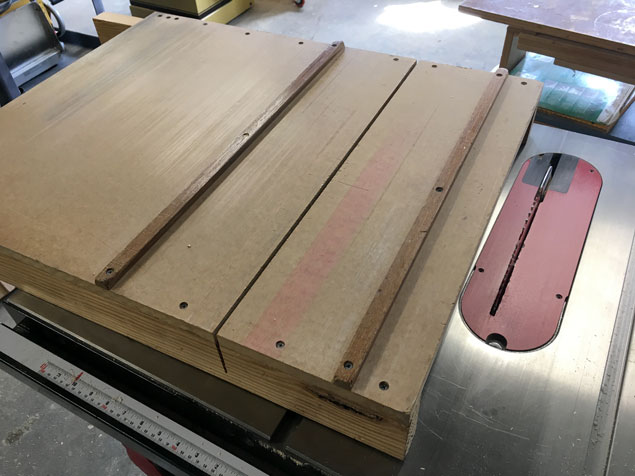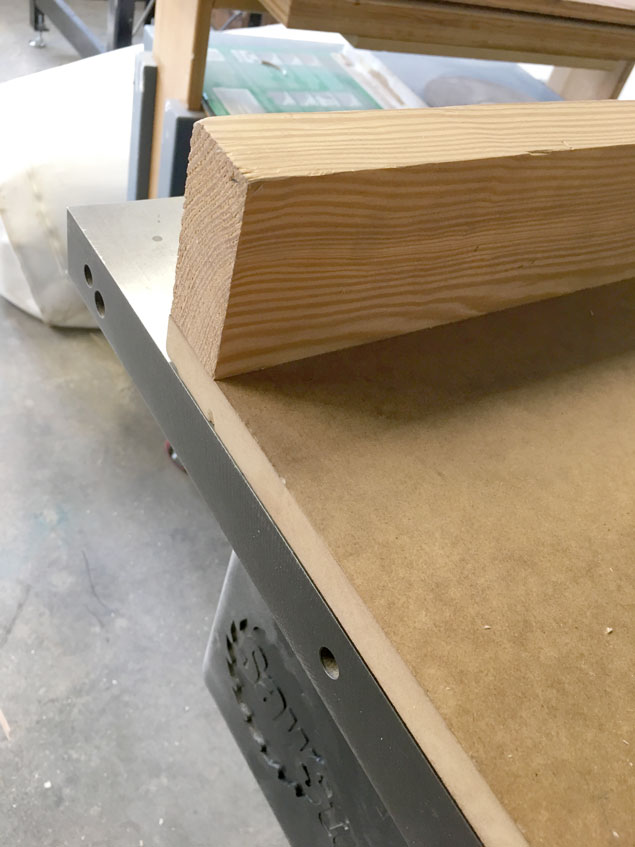We may receive a commission when you use our affiliate links. However, this does not impact our recommendations.
The sled we use the most in our shop is the one shown here. I built it five years ago, and it is as accurate as the day I made it.
I built it in response to my frustrations with fancy sliding tables, Jim-crack miter gauges and other silly devices used to crosscut wood at 90°. This sled and my panel-cutting sled handle all of my crosscutting needs. Here’s how I made it.
The base is a piece of 3/4”x 24” x 30” MDF. The two runners are 3/8” x 3/4” x 24’ and are white oak. The fences are 1-5/8” x 3” yellow pine. You’ll also need some nails, screws and glue.
Put the runners in the miter slots of your table saw. Apply a bead of glue to each runner. Lay the MDF on your table saw with one edge perfectly flush to the left edge of your saw’s table. About 99.3 percent of the time, this edge is parallel to the sawblade.
Clamp the MDF to the saw. Nail through the MDF and into the runners to temporarily hold them in place. Flip the base over and screw the runners to the MDF.
Now attach the fences at the front edge and back edge of the base. This next step is important so stop looking at cat videos for a moment: Screw – just screw – each fence in place. For the fence at the far end of the sled, use lots of screws. For the fence on the near edge, use only one screw on either side of the sawblade. This arrangement allows you to adjust this fence, get it square and then fasten it permanently.
After screwing the two fences down, make a series of test cuts to see if the fence on the near edge is square to the blade. If it isn’t square, remove one of the screws in the fence and pivot the fence slightly. Bore a new hole through the base and into the fence and try again.
When that fence is dead square, add additional screws to lock it in place. You can even add some glue to make the joint permanent (I did).
You might be wondering: How to I adjust this sled when it goes out of true? The answer: You don’t. If it does go out of true then you have probably crosscut 10 million pieces of wood or suffered a hurricane. (Then cut the sled up and use its parts for other things.)
— Christopher Schwarz
Here are some supplies and tools we find essential in our everyday work around the shop. We may receive a commission from sales referred by our links; however, we have carefully selected these products for their usefulness and quality.












i like the near-side fence overhang… haven’t seen that before….
Squaring up to the edge of the table vs squaring up to the fence…Is it a preference thing? My intuition would have lead me to the fence but I have been lead astray before.
I’m not sure how you’re going to see your work without adding a solar-powered led light system to your sled.